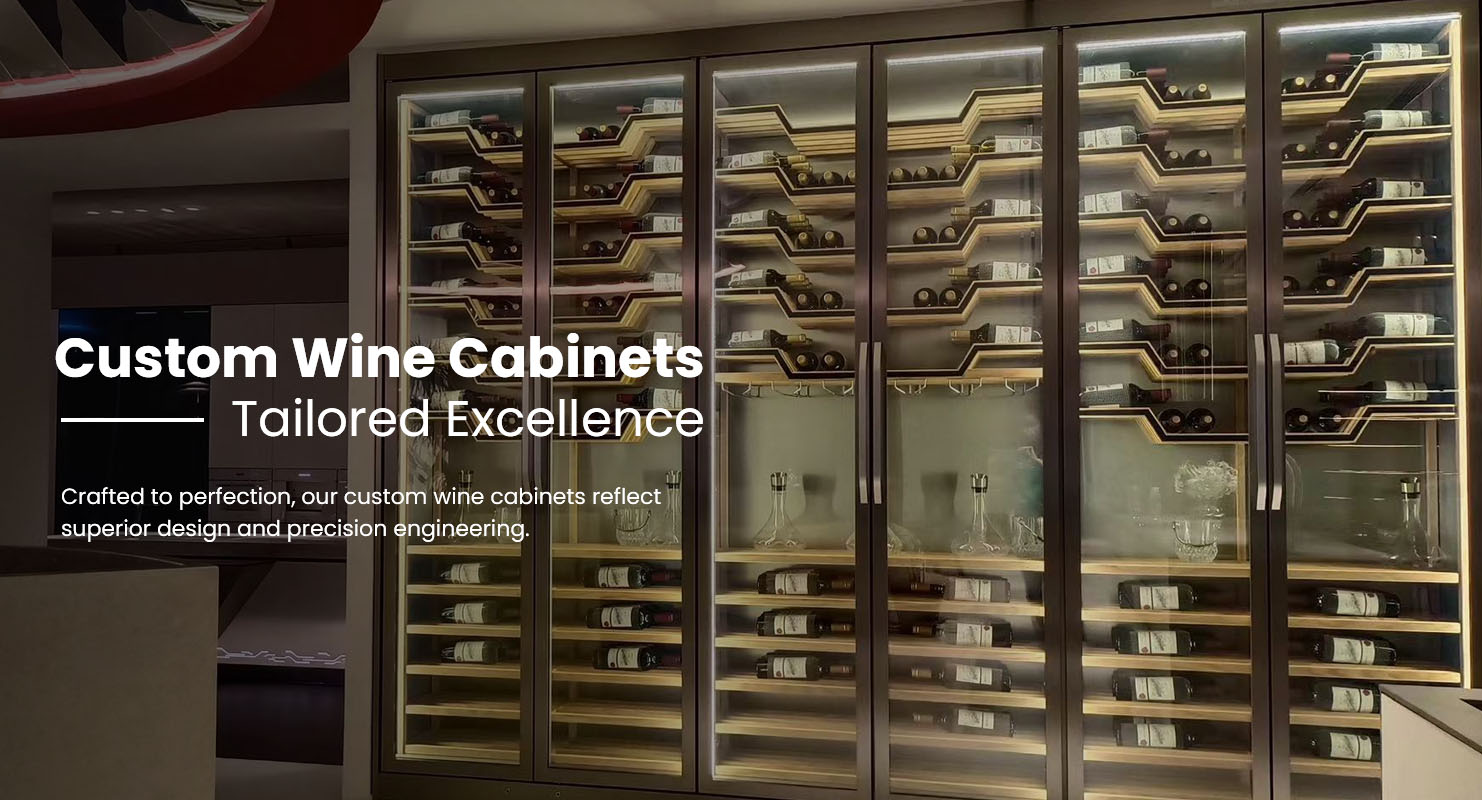How To Fix Wine Cooler Not Cooling
A Wine Cooler that stops cooling is a frustrating problem — but it doesn’t always mean it’s broken. In many cases, the issue is simple: blocked airflow, a dirty condenser, or a faulty thermostat. Before calling for repairs, you can troubleshoot most causes yourself.
1. Identify Your Wine Cooler Type
Different cooling systems have different causes when they fail.
| Type | Cooling Method | Common Issues |
|---|---|---|
| Compressor Wine Cooler | Uses refrigerant and condenser coils | Dust buildup, fan failure, thermostat malfunction |
| Thermoelectric Wine Cooler | Uses Peltier module and heat sink | Poor ventilation, high ambient temperature, power issue |
Tip: You can usually identify your type by listening — compressor units make a low hum, while thermoelectric ones are nearly silent.
2. Check the Power Supply
Before inspecting mechanical components, confirm that your cooler is receiving proper power.
What to do:
Make sure the plug is firmly inserted and the outlet works (test with another appliance).
Check the circuit breaker or fuse box.
Inspect the power cord for visible damage.
If your model has a power switch or control panel, confirm it’s turned on.
A loose plug or faulty socket is one of the most common “no cooling” culprits.
3. Verify Temperature Settings
Sometimes the temperature control was accidentally adjusted or reset after a power outage.
What to do:
Check your digital thermostat or dial setting.
Reset to the recommended range:
Red wine: 12–18°C (54–65°F)
White wine: 6–12°C (43–54°F)
Wait a few hours — if the compressor or fan starts running again, you’ve solved the issue.
In dual-zone models, make sure both compartments are programmed correctly.
4. Inspect Airflow and Ventilation
Poor ventilation is a leading cause of cooling failure — especially in built-in installations.
How to fix:
Move the cooler at least 5–10 cm (2–4 inches) away from walls or cabinets.
Clean any dust or obstructions around the vents.
Make sure nothing blocks the rear or front grille, depending on the model.
Compressor systems need free airflow to release heat. If blocked, the unit overheats and cooling efficiency drops dramatically.
5. Clean the Condenser Coils (Compressor Models)
Over time, dust accumulates on condenser coils, preventing heat from escaping. This makes the compressor run constantly without cooling properly.
How to fix:
Unplug the cooler.
Locate the coils (usually at the back or bottom).
Vacuum or brush away dust and debris.
Plug back in and listen for the compressor starting up.
Cleaning frequency: every 3–6 months for consistent performance.
6. Check the Internal Fans
Both compressor and thermoelectric models rely on small fans to move air. If they stop spinning, cold air won’t circulate.
How to fix:
Unplug the cooler.
Remove the rear or interior panel to access the fan.
Spin the blades manually — they should move freely.
Clean with a soft brush or compressed air.
If it’s stuck or noisy, replace the fan motor.
Fan replacements are inexpensive and take less than 30 minutes on most units.
7. Inspect the Door Seal
A damaged or loose door gasket lets warm air leak in, making the unit run constantly but never reach temperature.
How to fix:
Run your hand along the edges — feel for cold air escaping.
Clean the gasket with mild soap and warm water.
If cracked or brittle, replace it with a compatible seal.
To test: close a sheet of paper in the door — if it slides out easily, the gasket isn’t sealing properly.
8. For Thermoelectric Coolers: Check Ambient Temperature
Thermoelectric systems depend on the surrounding air to dissipate heat. If the room is too warm (above 27°C / 80°F), they may stop cooling entirely.
How to fix:
Move the cooler to a cooler room or away from direct sunlight.
Add a small desk fan behind the unit to improve ventilation.
Avoid placing near ovens or dishwashers.
In tropical or hot regions, compressor-based coolers from Winton are better suited for stable performance.
9. Test the Thermostat and Temperature Sensor
If your cooler has power but doesn’t cool, the thermostat or sensor might have failed.
How to fix:
Turn the temperature setting up and down — listen for a click or fan activation.
If nothing changes, unplug the cooler and open the control panel.
Check for loose wiring on the thermostat or PCB (circuit board).
Replace the thermostat if readings stay inaccurate.
Advanced Winton models use digital thermostats with ±1°C precision sensors, minimizing failure risk.
10. Check the Compressor (If Applicable)
If the compressor isn’t running or runs continuously without cooling, it may be overheating or leaking refrigerant.
What to do:
Touch the compressor area (rear bottom) — it should be slightly warm, not hot.
Listen: if it clicks repeatedly without running, the start relay or capacitor may be faulty.
If there’s oil residue under the cooler, it could indicate a refrigerant leak — this needs professional repair.
Compressor repairs require certified technicians; do not attempt DIY refrigerant refilling.
11. Reset the Cooler
Sometimes, an electronic glitch prevents the control board from functioning properly.
How to fix:
Unplug the cooler for 5–10 minutes.
Plug it back in.
Hold the power or reset button (if available) for 3–5 seconds.
Recheck temperature settings.
This often restores normal operation in digital models.
12. When to Call a Technician
You may need professional help if:
The compressor runs constantly but interior stays warm.
The thermostat and fans work, but there’s no cooling at all.
You hear metallic or grinding noises.
The display panel shows an error code.
A qualified technician can test electrical continuity, pressure, and control board function safely.
13. Why Winton Wine Coolers Stay Reliable
Winton Wine Cooler products are engineered for long-term stability, using premium components that minimize cooling failure risks.
Key design advantages:
High-efficiency compressors with smart temperature management.
Dual-zone systems for balanced cooling distribution.
Quiet EC fans and corrosion-resistant condensers.
Digital thermostat protection with auto-defrost and fault monitoring.
Front ventilation for safe built-in installation and consistent airflow.
Winton’s commitment to performance ensures every model maintains precise, even cooling — even in variable climates.
✅ Summary
If your wine cooler isn’t cooling:
Check power, temperature settings, and ventilation.
Clean coils and fans regularly.
Inspect door seals and thermostat function.
Move thermoelectric units to cooler environments.
Reset or service if issues persist.
Most cases are caused by simple airflow or maintenance problems — not major failures.
Winton Wine Coolers, built with precision compressors, efficient insulation, and smart digital controls, deliver dependable cooling performance and long-lasting protection for your wine collection.
Reliable engineering. Steady cooling. Trusted Winton performance.


